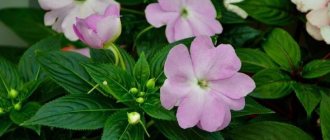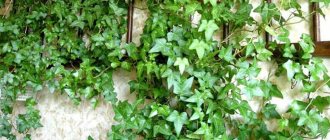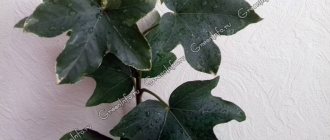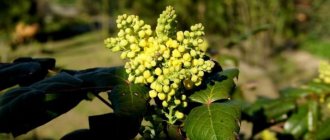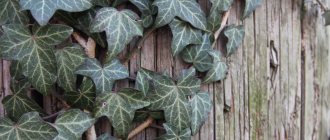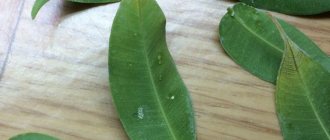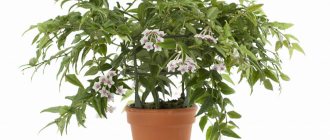Speaking of ivy, first of all everyone imagines the trunks of old trees or the walls of country houses richly entwined with unpretentious lush greenery. Indeed, ivy is one of the most common garden vines in our summer cottages.
However, not everything that climbs up the supports is called ivy. Although both scientists and ordinary people, of course, added confusion to the taxonomy. Thus, the name “ivy” is mentioned in taxa and in the colloquial names of many plants that have nothing to do with real ivy (Hedera). Most often we are talking about Boston ivy, which is actually nothing more than a triacid vine, and you can also easily get confused with:
- wax ivy (actually it is fleshy hoya);
- Asian and American poison ivy (some species of plants of the genus toxicodendron);
- Amur ivy (Daurian moonseed);
- false ivy (ragwort large-tongued);
- Scandinavian ivy (southern plectranthus);
- damn ivy (epipremnum)…
All these plants are not related to ivy and, therefore, require completely different growing conditions.
How not to get confused in such diversity, how does real ivy differ from other climbing plants and what types and varieties are best to choose for landscaping apartments and outdoor architectural forms? Let's figure it out together.
Description of garden ivy (Hedera)
This type is the most common due to its increased resistance to cold and unpretentiousness. Ivy can be grown as a houseplant, but it also looks great in the garden.
Decorating the inside of the house with ivy shoots
Garden ivy - evergreen and frost-resistant
Winter-hardy common ivy is popular in Russia. The first two years mark slow growth. The plant is used as a ground cover crop and for landscaping vertical structures.
For your information! Ivy prefers partial shade without wind.
Characteristics of garden evergreen ivy
The shoots of a climbing vine can reach 30 m. It is firmly attached to a vertical wall or tree due to its sucker roots.
In total there are 15 types of ivy and over 1000 varieties. The leaves may vary in color, size and shape depending on the variety.
Variegated species are given a certain decorativeness by the white border of the leaves, dark or light inclusions in comparison with the main background. The leaves are dense to the touch with a smooth surface. October and September are considered the flowering period of the plant. Light green inflorescences in the shape of umbrellas.
Important! The fruits of the flower are poisonous; they look like black peas with a blue tint.
Types of ivy for the garden
Popular types and varieties
How indoor ivy or hedera propagates
The plant is a heat-loving crop, so it is most often found in the south. Some frost-resistant vines grow in temperate climates. Here are the main types of ivy:
- ordinary. This is the most common plant that is used for planting outdoors and indoors. The leaves are medium-sized and have a five- or three-fingered shape. Depending on the variety, the foliage may have blotches or shine. Growth is moderate, reaching up to 20 m in length, weaving around nearby surfaces. Ivy is used for vertical gardening of structures and buildings. It is better to plant in partial shade. The most popular frost-resistant varieties are Goldhert, Mona Lisa, Eva, Sagittaefolia;
- Caucasian, or Colchian. This is a fast-growing plant species characterized by large dark green leaves and strong shoots. The liana is capable of weaving a surface up to 30 m high and grows in the shade. Popular garden forms - Dentata Variegata, Arborescens;
- Crimean. Ivy is unpretentious, grows quickly, and is resistant to cold and drought. As it grows, there is a lignification of the shoots that wrap around shrubs and trees. The length of an adult vine reaches up to 30 m, and the trunk in circumference is up to 1 m.
Each type has its own characteristics and features, but they are ideal for garden landscaping.
Ivy care
Common indoor variegated ivy flower
The wind carries whiteflies, mites, aphids, and thrips that are dangerous to ivy. Insecticides must be used immediately as soon as pests are noticed on leaves and stems.
Note! Diseases and parasites can be recognized by yellowed, pale or fallen leaves.
Sometimes it is necessary to repeat the procedure for getting rid of pests.
Propagation of ivy by cuttings
It is recommended to use apical cuttings that can multiply quickly. To grow a seedling you need:
- Cut cuttings up to 10 cm long that have at least one healthy node.
- Plant in a pot or root in loose soil in a greenhouse, water.
- Replant the ivy to a permanent location when a sufficient number of roots have formed.
For your information! Cuttings from a young plant take root poorly and sometimes even rot.
Preparing for winter
Low temperatures can have a detrimental effect on the plant, especially in the middle zone. Covering the soil with an additional layer of mulch will help protect the vine. In winter, it is recommended to sprinkle snow up to 30 cm high on the soil. Experienced gardeners cover lashes that grow vertically with polyethylene or burlap.
Important! In early spring, the top layer of covering should be removed to avoid damage to the stems due to high humidity and temperature.
Planting an outdoor plant in a pot
Basic requirements for cultivation
- Elevated areas without close groundwater are suitable for planting;
- The plant is thermophilic and does not take root well in northern regions;
- Watering is moderate, ivy does not tolerate excessive soil moisture;
- Shelter for the winter is necessary; it freezes out at low temperatures, except in the southern regions (Caucasus, Crimea, Krasnodar Territory);
- Prefers sunny areas, but not full sun, and can grow well in slightly shaded areas.
- The plant needs protection from wind and drafts;
- Ivy “does not like” dry air with low humidity levels;
- The soil should be light, rich in organic matter, without clay impurities
- Ivy needs supports.
Gardeners love ivy for its unpretentiousness and ability to fit into any environment. In addition, the plant is valued for its ease of propagation.
Possible problems in growing garden evergreen ivy in open ground
When growing a plant, the greatest dangers are thrips, whiteflies, aphids, mites and insects that are carried by the wind. When pests appear on leaves or stems, you must immediately begin treating perennial outdoor ivy with insecticides. The liana should be sprayed with karbofos or actellik diluted in water. Sometimes several irrigations are required to completely eliminate parasites.
Hedera helix mix or common ivy - home care
The affected areas must be removed so that the infection does not spread to the stems and leaves that are nearby.
Violation of care rules
There are several signs by which you can find out about the presence of pests or diseases:
- yellow and dry leaves indicate excess fertilizer and humidity;
- the pallor of the plant indicates a lack of ultraviolet rays, so it should be transplanted from the shade to an area with good lighting;
- yellow foliage signals dry soil, so you need to control watering;
- Dry air causes leaves to fall off; spraying with water from a hose will eliminate the problem.
Important! When parasites appear on a vine, it is necessary to inspect all nearby crops.
Poisonous or not
The plant juice does not contain any toxic compounds and does not emit harmful substances.
Ivy causes more controversy and superstitions about “energy toxicity” for household members. The plant is considered a “husband’s man,” a vampire that worsens relationships with representatives of the stronger sex.
Such signs are more likely to come true through self-hypnosis, so whether it is possible to keep ivy at home, everyone must decide for themselves. If a girl is lonely and suspicious, and believes in the negative influence of the flower, then it is better to refuse to keep the plant.
Interesting! The ancient Greeks considered hedera, on the contrary, a harbinger of love and a guarantor of male fidelity.
How to plant street ivy
Planting an outdoor plant is slightly different from an indoor one. You need to know all the nuances of caring for and propagating evergreen vines before planting ivy at home.
Preparation and planting of purchased planting material
Seedlings are planted at a distance of 50 cm from each other to facilitate future care. The ivy root and drainage should be placed in the hole. When planting, the soil is compacted and moistened abundantly. Air must flow to the rhizome, so it is necessary to control the condition of the top layer of soil. It can be loosened or covered with peat, sawdust, leaves, etc.
Conditions for ivy propagation
Landscaping the area with a climbing plant is not difficult if you immediately purchase new seedlings. But the garden vine can be propagated independently, although the task is not very simple. The main thing is to choose the best method and follow all transplant rules.
The main methods of propagating plants that grow in open ground near the house or in the country:
- rooting of cuttings;
- cuttings;
- division of perennial shrubs.
Old ivy can be separated and there is no need to completely dig it up. Part of the vine should be removed around the perimeter, using these branches as independent seedlings.
Reproduction by cuttings
Cuttings are the main method of ivy propagation.
The twigs of a houseplant take root quickly, so plain water is often used. For garden vines, different methods are used, but cuttings remain the main one. The ivy vines begin to take root within a few weeks.
It is recommended to use annual shoots; stem and apical cuttings are suitable. The first require the separation of an entire shoot with 8-10 leaves. Select not too small apical cuttings, 10-20 cm long, which must be cut at an angle. The two lower pairs of leaves are cut off.
Plant cuttings can be rooted in:
- mixtures of sand and peat;
- water;
- soil with a high sand content;
- solution of rooting stimulants.
Note! For the procedure, different containers, greenhouses and even mini-greenhouses in the open air are used.
It is not necessary to cover the ivy and create conditions with optimal temperature conditions. The main thing is to keep the soil consistently moist. Covering with a cap slightly speeds up rooting; the same effect can be achieved by using growth stimulants.
The apical cuttings need to be planted in the ground, deepening them to the first leaves. The average rooting period is 2-6 weeks, after which the vine can be transplanted to a permanent location.
Stem cuttings are laid horizontally on the soil surface. The shoots need to be pressed to a depth of 2 cm, leaving the leaves on top. Basically, the stem is left whole, but it can be divided into cuttings with a single leaf node. Rooting time is 2 weeks, after which the tip of the shoot begins to grow rapidly. Plants should be separated only after 2 weeks.
For your information! It is better not to immediately transfer rooted cuttings to a permanent place; it is recommended to use a separate bed or container for growing. The final transplant is carried out in early autumn or late summer, but the best time is the beginning of spring. During this period, the plant will grow a rhizome and will be protected from frost.
Rooting cuttings of ivy
The plant can be propagated by layering, like other types of climbing vines. Scourges located on the ground are able to take root on their own. To obtain strong stems, this process can be stimulated. Rooting cuttings is a very popular method of propagation and is ideal for those who want several new plants.
Even for novice flower growers, the procedure will seem simple:
- In a small trench it is necessary to place the lower shoots of variegated garden ivy for vertically growing plants or along the perimeter for horizontally growing plants. Strong and long shoots are used for propagation. To speed up rooting, it is necessary to make cuts on the branches.
- The branches are secured in the ground with staples, sprinkled with a nutrient mixture or substrate on top.
- Stable humidity will be maintained by abundant watering at first, and then regular moistening.
There is no need to rush to plant new stems after rooting. Next spring, you can separate the new shoots as an independent plant and plant them in a permanent place.
Preparing for planting in open ground
It is recommended to plant the plant in an elevated place without wind. It is necessary to avoid a completely open area, because the leaves can get burned from direct ultraviolet rays. It is better to choose partial shade.
Evergreen liana in the country
Next is to prepare the ground. The soil must be breathable and moist.
When purchasing an already grown seedling, you need to pay attention to its condition. A healthy plant has a developed root system.
Important! It is not recommended to plant the plant on clay soil because the roots will not receive enough oxygen.
Reproduction
Garden ivy is quite easily propagated by both cuttings and offsets. Experienced gardeners advise doing this in spring or early summer. The main thing is to choose only healthy specimens for reproduction.
Cuttings
Cuttings are taken in spring or summer from young shoots no older than three years. To plant a new plant, stems with a top about 10 cm long (but not more than 15 cm) are cut off, the four lower leaves are removed and the stems are placed in water to a third of their length. After some time, they take root and are planted in open ground.
You can immediately plant the cuttings in boxes with a mixture of garden soil and sand. It usually takes four to six weeks to form the roots needed for planting.
After which the seedling is planted in the selected area to a depth of about 20 cm, drainage is provided at the bottom of the hole. The distance between plants should be 30–60 cm; after planting, they are watered and the soil is mulched. For the winter, it is better to cover young specimens with spruce branches or leaves.
By dropping
This method is well suited if you plan to form a continuous green curtain along one surface. In this case, it is better to use drops. To do this, a long healthy stem is selected, a small incision is made, this place is pinned to the ground using a special bracket and sprinkled with earth.
After some time, the ivy will take root and form into a separate plant. If necessary, you can carefully separate it from the main plant and transplant it to another place.
Ivy in the country
The best shrubs and trees are always planted on a summer cottage. A climbing vine will decorate a place that is used for relaxation.
How to plant ivy on a plot
Many gardeners are interested in how to grow variegated garden ivy. It is better to plant cuttings in spring in breathable and nutritious soil to a depth of 15-20 cm.
Note! If the soil is heavy, you need to dig a hole a little deeper and make drainage from expanded clay or broken bricks.
The young plant should be directed towards a support or fence. Watering is carried out moderately so that there is no stagnation of water. You can fertilize the vine with organic fertilizer once a month. Before winter, shoots should be covered to prevent frostbite of the stems and roots.
Use in landscape design
Evergreen vines attract attention due to the variety of colors and shapes of the leaves. Designers use the plant to decorate vertical surfaces:
- sculptures;
- house walls;
- arches
Note! When creating a structure, it is necessary to constantly direct the growing shoots in the right direction.
Combination with other plants
Common garden ivy can be combined with other plants that can embody any design ideas. The liana is planted near roses, flowering shrubs and coniferous trees. As a result, the gardener gets ivy climbing along the wall, which is pleasing to the eye.
How to prevent the growth of garden evergreen ivy
Gardeners are not always happy about the intensive growth of the plant, which begins to entwine nearby trees and bushes. To get rid of ivy, you need to cut it off at the very root, dig up the entire root system and make sure that there are no shoots left on the ground. Sometimes herbicides are used.
Following the rules of care, planting and propagation will allow you to achieve good results. Evergreen ivy will grow quickly and beautifully. With the help of the plant, they create an original landscape design, decorating hedges, other shrubs and even the walls of the house with greenery.
Seeds
This is the most difficult method of propagating garden ivy. The seeds are removed from the berries after ripening and dried for one to two days. Plant the seeds in prepared containers with a nutrient substrate, in which drainage holes are made, then water generously from a sprayer. After this, the containers are covered with glass, which is best not to be opened in order to maintain the greenhouse effect. Watering is carried out from a tray on which the containers stand. The first shoots should appear in 15-25 days.

